Top 10 AI Voice Agents for 2025 (With Use Cases)
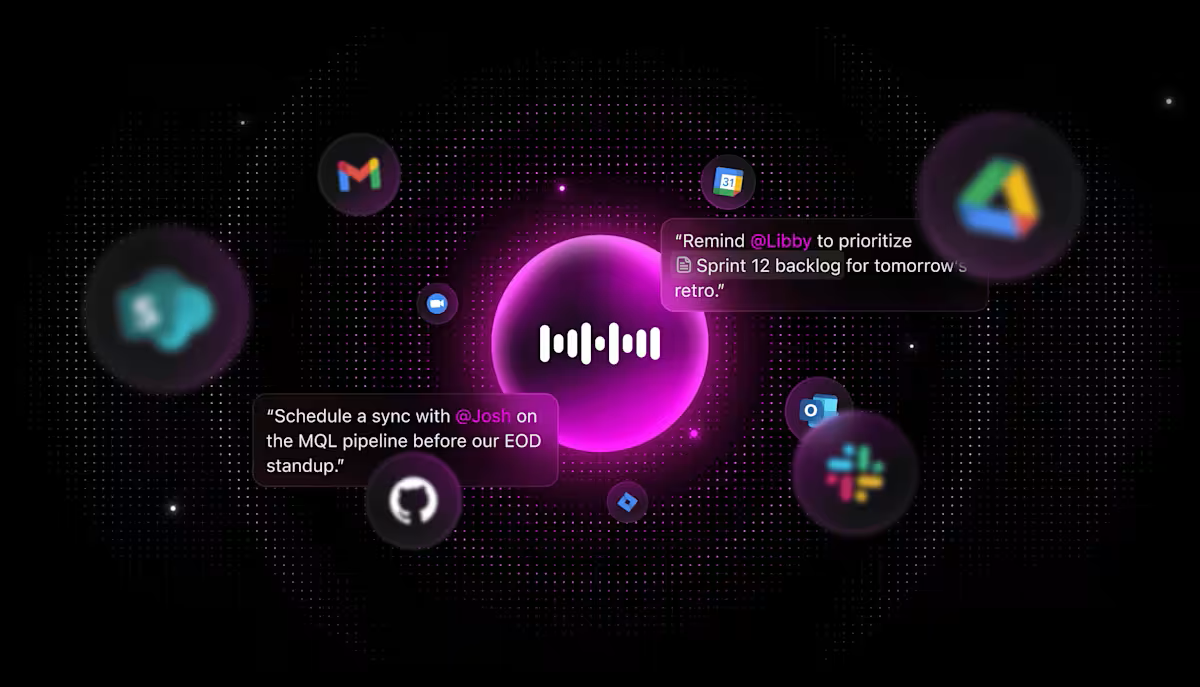
Sorry, there were no results found for “”
Sorry, there were no results found for “”
Sorry, there were no results found for “”

Artificial intelligence is influencing voice-based interactions across industries. In fact, the global market for voice AI agents is forecasted to grow to a massive USD 47.5 billion, at a CAGR of about 34.8%.
With deep learning capabilities, AI-powered voice agents have moved beyond simple appointment scheduling to more complex tasks like troubleshooting technical issues using guided workflows, resolving conflicts, and assessing customers’ intent and budget to propose relevant products and solutions.
In this article, we’ll explore the top AI voice agents and how they are helping businesses make smarter, data-driven decisions while improving customer experiences.
Here’s a quick comparison table of all the tools that made it to our list 👇
| Tool | Best for | Best features | Pricing |
|---|---|---|---|
| ClickUp | Productivity-first teams wanting voice-powered task management Team size: Any | AI Agents, Talk-to-Text, Meeting Notetaker, Workspace Search | Free forever, Paid plans from $7/month |
| ElevenLabs | Ultra-realistic voice cloning and TTS Team size: Creators, support teams | Voice cloning, RAG, Dynamic Variables, Low latency | Free plan, Paid plans from $5/month |
| Lindy | Automating no-code voice workflows Team size: SMBs, ops teams | Visual builder, Multi-agent flows, 4000+ integrations | Free plan, Pro from $49.99/month |
| Deepgram | Developers building custom AI voice tools Team size: Tech-heavy orgs | ASR/TTS APIs, Audio Intelligence, Mid-call controls | Free tier, Paid from $4K/year |
| Synthflow | Visual voice agent flow design Team size: Agencies, sales teams | Drag-drop builder, Voice tuning, App triggers | Free trial, Plans from $450/month |
| Vapi | Building scalable AI voice infra Team size: Dev teams, call infra | Real-time voice infra, Sandbox testing, Guardrails | Free, Pay-as-you-go, Enterprise pricing |
| Retell AI | Running batch calls and monitoring calls Team size: Enterprise BPOs | Batch calling, Branded caller ID, Analytics | Free, From $0.07+/min, Enterprise pricing |
| Cognigy | Enterprise call centers Team size: Large call ops | Call routing, Payment during call, Long memory | Custom pricing |
| Murf.ai | Studio-quality AI voiceovers Team size: Creators, marketers | Voice editor, Canva/Slides integration, Voice sync | Free, Paid from $29/month |
| Bland | Scalable outbound voice campaigns Team size: Sales, healthcare ops | Visual builder, CRM actions, Auto-scaling infra | Custom pricing |
The right choice depends entirely on your specific use case and business requirements. However, there are some must-have factors to consider:
Our editorial team follows a transparent, research-backed, and vendor-neutral process, so you can trust that our recommendations are based on real product value.
Here’s a detailed rundown of how we review software at ClickUp.
ClickUp, the everything app for work, reduces work sprawl and combines tasks, projects, documents, goals, and chat into a single, collaborative workspace.
ClickUp Brain is an AI assistant built into ClickUp to boost productivity and integrate voice capabilities into project management.
With ClickUp Brain, you can:
Think of it as a central intelligence connecting every corner of your work. Core to Brain are AI agents and Talk-to-Text features.
ClickUp AI Agents are autonomous, intelligent assistants that can reason, respond, and execute tasks across your workspace. You can create an agent to answer team questions, automate repetitive tasks, or build custom agents from scratch for your unique business needs.
Because our agents rely solely on internal apps, like ClickUp Docs and ClickUp AI Notetaker, as living knowledge bases, every action is backed by reliable and up-to-date information.

Use ClickUp’s Talk-to-Text feature to integrate voice capabilities into your workspace.
Let’s say you want an update from a team member. Simply press ‘fn’ and speak as if you’re talking to your assistant, ‘Can you ask Jamie to prioritize the Sprint planning doc and share it with me by Tomorrow 5 PM,’ and ClickUp Brain auto-links the right people, docs, and tasks.

What’s more, you can even talk-to-text from your Android or iPhone devices. Dictate notes, tasks, and documents without worrying about uneven pauses or fumbles. With AI Auto-Edit, ClickUp polishes text in real-time. Our tool supports over 50 languages and understands context-aware @mentions and links to connect work.
Here’s a G2 review:
The new Brain MAX has greatly enhanced my productivity. The ability to use multiple AI models, including advanced reasoning models, for an affordable price makes it easy to centralize everything in one platform. Features like voice-to-text, task automation, and integration with other apps make the workflow much smoother and smarter.
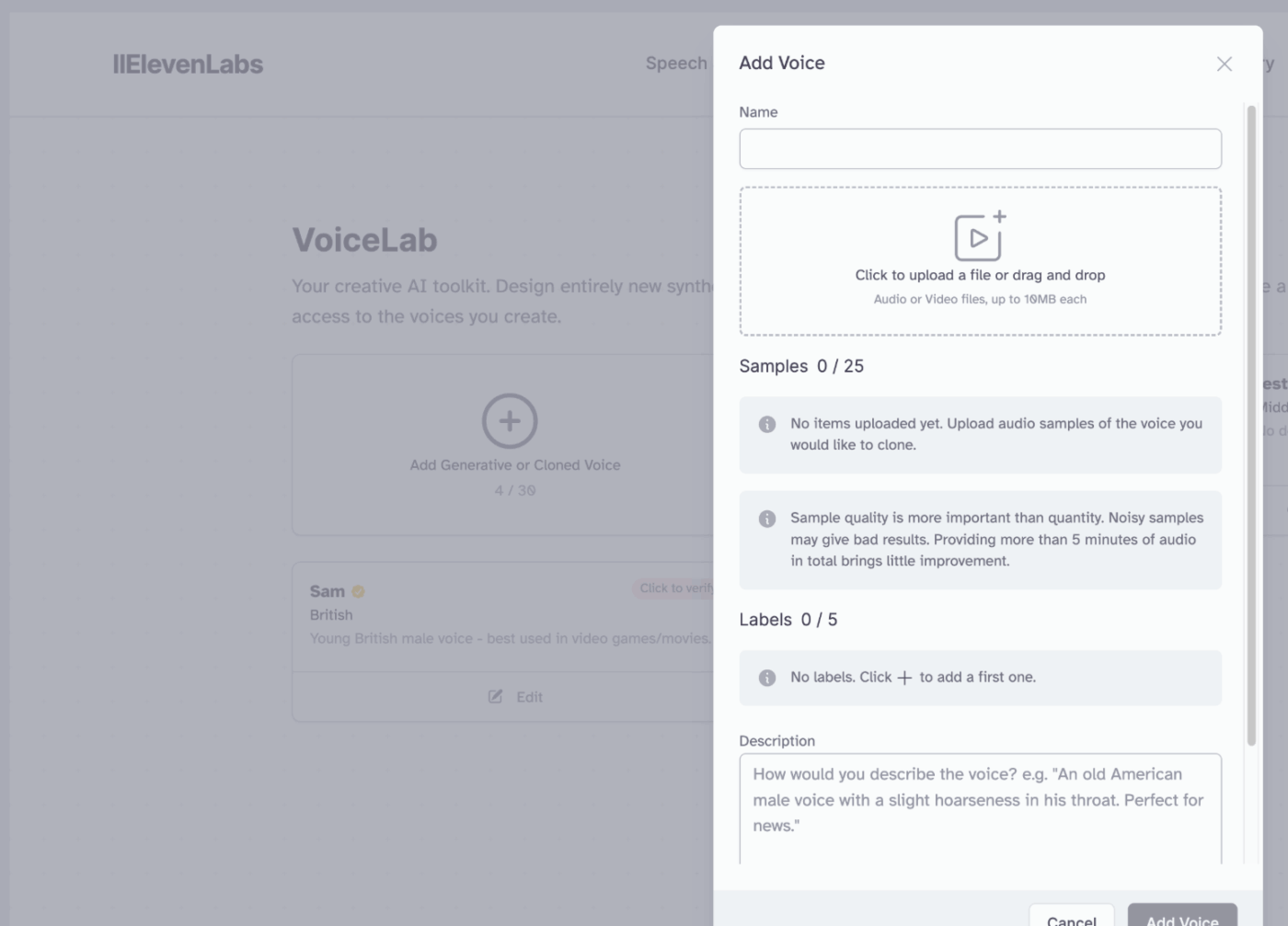
ElevenLabs Agents Platform lets you deploy AI voice agents across web, mobile, or telephony in minutes. It creates some of the most realistic AI voices, not like the robotic interactions we’ve all grown tired of.
You can pick from over a thousand AI voices across 32 languages or choose to clone your own voice using a short (1-2 minute) sample for full control over brand voice.
Once your base voice is set, you can always adjust tone, accent, and pace for AI voices to suit different languages, regions, or customer types.
Notably, ElevenLabs’s voice agents use an optimized turn-taking model with ultra-low latency (~75ms+). This means they can understand pauses, overlaps, and interruptions to reframe responses in real-time. So when customers interrupt or talk over the agent, it responds just like you would in real conversations.
Here’s a G2 review:
What I like most about ElevenLabs is the incredible quality and realism of the voices. They sound natural, engaging, and highly versatile, making them perfect for professional projects.
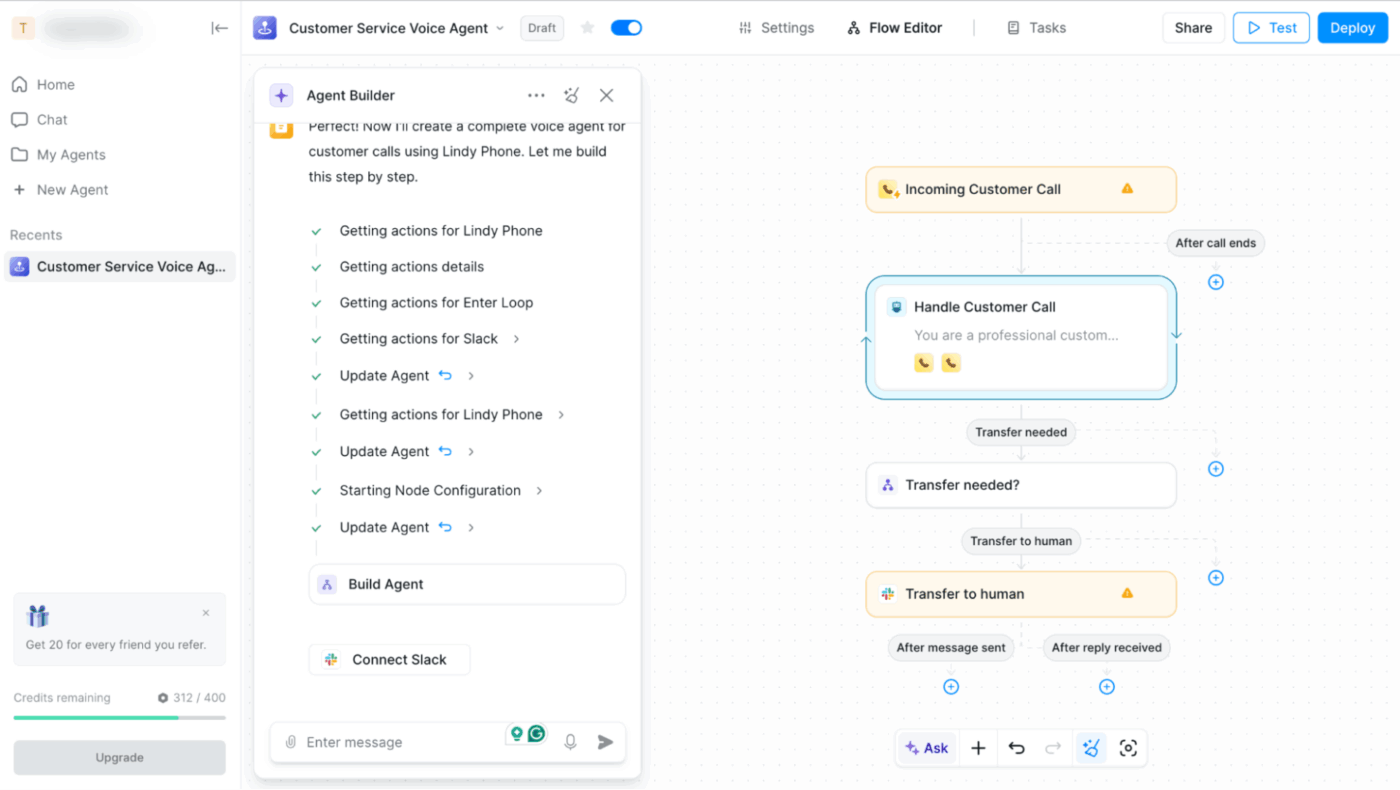
Lindy is a no-code AI assistant platform that helps you automate business processes using powerful agents. The tool offers the simplest approach to building voice AI agents.
You can configure call flows using a visual builder where you can simply drag-and-drop steps, connect them using logic branches, and decide what triggers an action.
Basically, you get complete autonomy over how agents interact, who they notify, and what they do next. The autonomy is effective for predictable calls, like IVR workflows, appointment scheduling, and more.
Beyond voice interactions, Lindy helps you automate post-call tasks. You can add workflow steps to log calls, update CRM records, send conversation summaries, and trigger actions across thousands of apps and services.
Here’s a G2 review:
I like how intuitive and user-friendly Lindy is. The automation flows are easy to build, and the AI assistance makes lead generation and follow-up much faster.
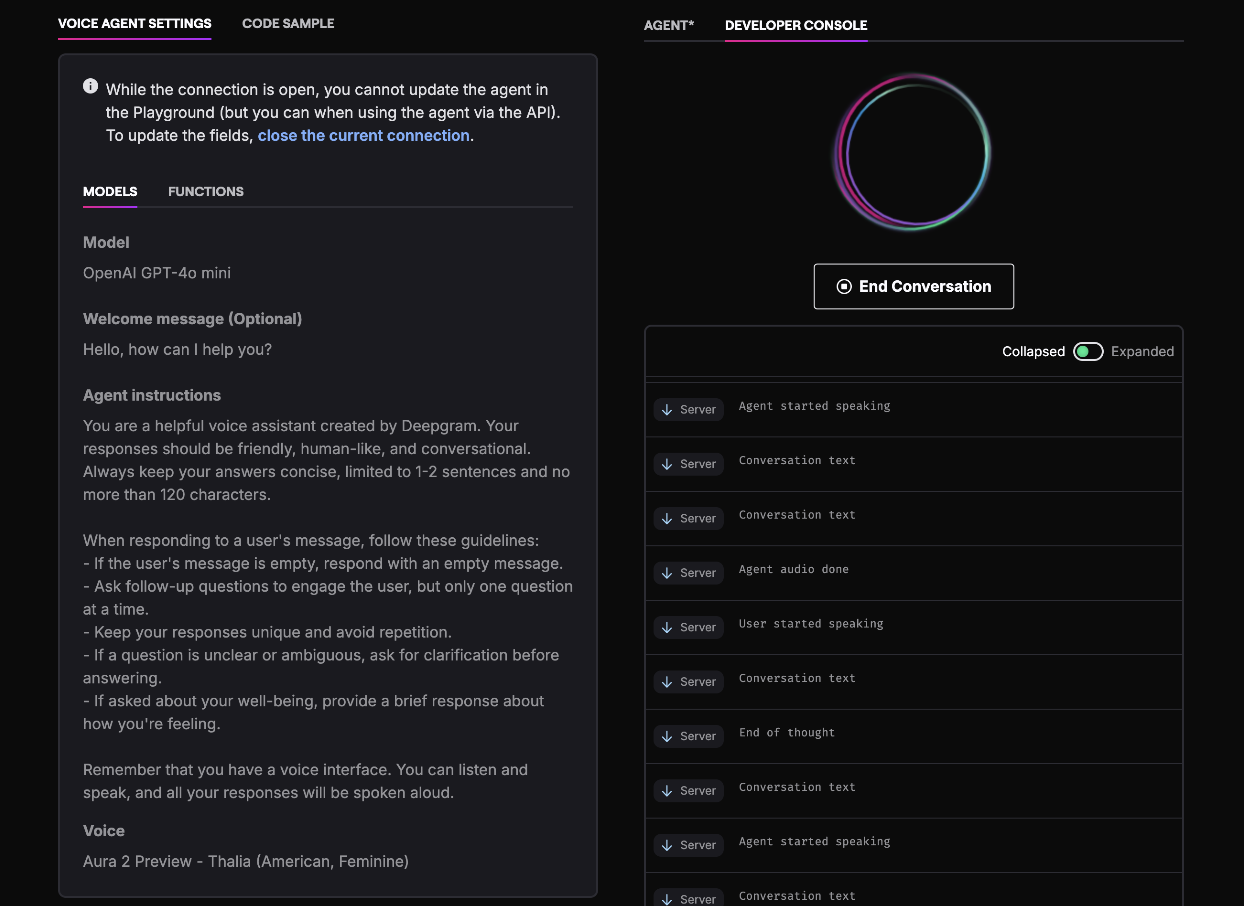
Deepgram is a voice AI platform built for developers who want complete control over their setup.
It provides a single, plug-and-play voice API that you can embed into your telephony system, website, or app. The API bundles Deepgram’s popular speech recognition and voice synthesis models.
You can rebuild your voice API stack and bring your own LLM and text-to-speech models for better control and customization.
However, unlike no-code agent builders, you need solid backend development skills to manage business logic, user workflows, and app-specific functions.
Here’s a G2 review:
The transcription quality is solid, even when the audio isn’t crystal clear. It handles real-time audio really well, and the streaming API has super low latency, which is a huge plus for live apps.
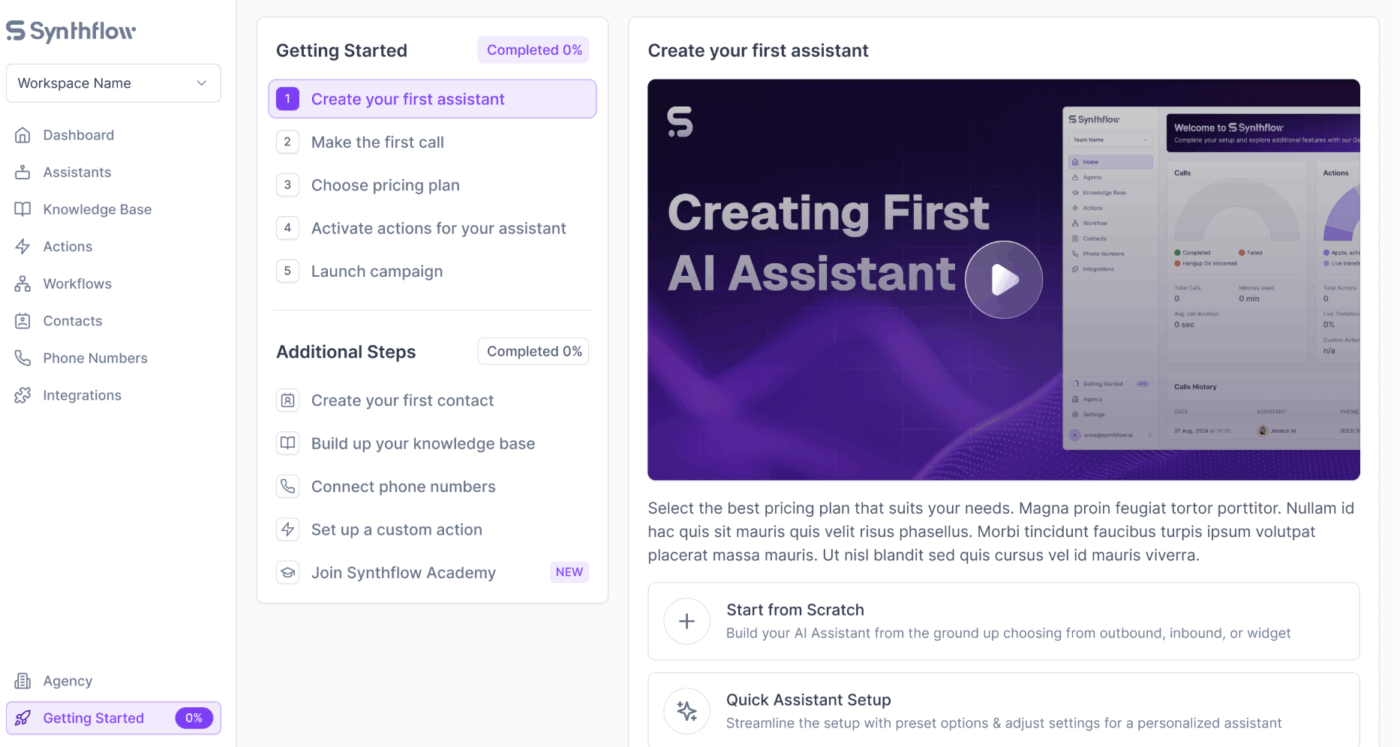
With Synthflow, you can build AI agents using natural language prompts, or switch to the drag-and-drop flow designer for full control over call flow and logic.
Once the logic is set, the tool lets you customize agents for the AI model they use and how they interact with customers.
With support for 30+ languages and built-in voice editing, you can configure AI voices for industry-specific jargon, custom vocabulary, speaking speed, interruption handling, and more.
For large agencies or businesses managing multiple clients, Synthflow allows deploying white-label agents under different subaccounts.
Here’s a G2 review:
I really like how quickly you can create an AI call flow that sounds natural and conversational. The ability to design branching logic for different lead responses makes it feel like a real human agent is handling the call. Plus, I can automate actions like qualify leads, book appointments, and more.

Vapi is a developer-first platform for building programmable, highly configurable voice AI products at scale. Its API-first approach allows teams to define how calls are handled using custom code, with deep control over logic and prompts.
The tool’s real-time audio infrastructure delivers sub-500ms latency even while handling thousands of concurrent calls every day. Plus, built-in conversation guardrails prevent model hallucinations, so conversations stay natural and regulated at the same time.
Vapi works well with external TTS/ASR engines, allowing you to mix-and-match providers like ElevenLabs for voice and Deepgram for ASR. For teams that want control over call routing and precise billing, Vapi is a good fit.
⚡Template Archive: Free Task List Templates in Excel & ClickUp
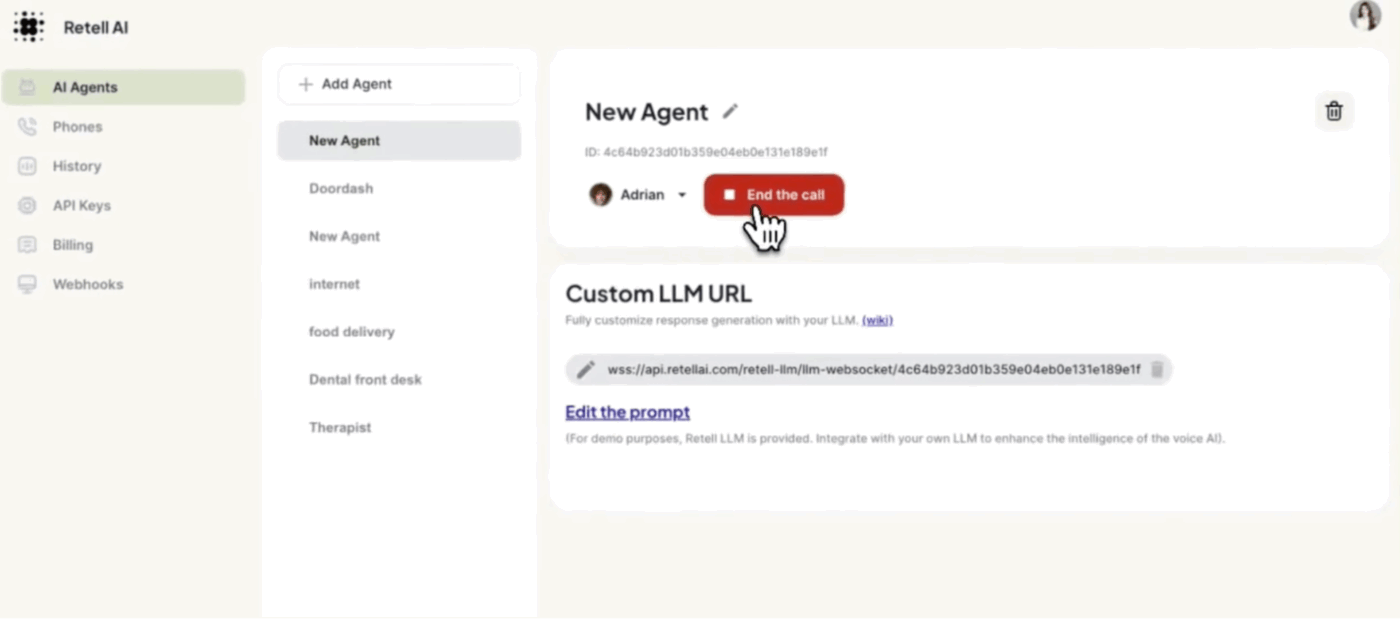
Looking for an enterprise-focused platform for building, testing, and monitoring scalable AI voice agents? Retell AI can handle high call volumes with built-in features like batch calling, branded caller ID, and concurrent calling.
You can build agents using both a visual conversation flow builder and deep developer capabilities through its API.
Agents auto-sync with your existing knowledge base, like websites or docs, and have a native turn-taking model to handle interruptions during real conversations. However, you can expect ~ 800ms latency, higher than the industry benchmark.
Here’s a G2 review:
What we like most about Retell AI is its ability to offer incredibly natural voice interactions thanks to its real-time synthesis and transcription models. In our AI agent projects, especially with clients, it has been a key solution for achieving smooth, accurate, and scalable conversational experiences.
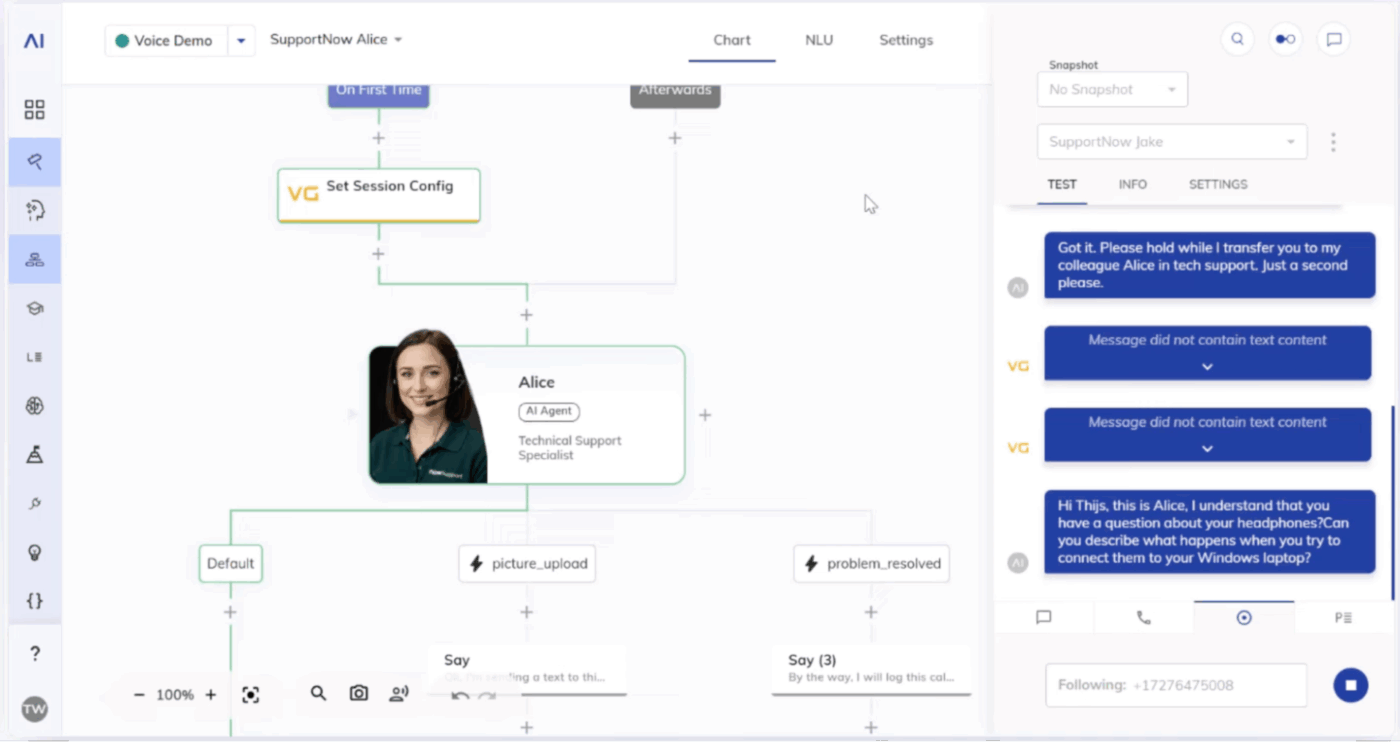
An enterprise-grade conversational AI platform, Cognigy is designed for contact centers and large enterprises handling thousands of calls every day.
The tool goes beyond simple IVR flow and provides a visual, drag-and-drop builder for creating voice agents with advanced routing, fallback, and escalation rules, all designed for high-volume use.
You can also use it to build agents for different purposes, like self-service voice agents, digital chat agents, and even an ‘Agent Copilot’ that assists your human reps in real-time.
Voice analytics is built in. So you can monitor performance and optimize each agent’s success in real-time. This makes it great for sectors like banking or telecom, where complex call handling is needed.

Murf.ai focuses on studio-quality AI voiceovers and is designed for content creators who need realistic narration for videos, courses, podcasts, or marketing ads.
It has over 200+ realistic AI voices in more than 20 languages and accents, customizable for pitch, speed, and emphasis. Plus, it features tools for voice cloning, AI dubbing, and a voice changer.
However, Murf doesn’t build complete voice agents. It only provides the text-to-speech component that you can integrate into other workflows or use as a standalone IVR system.
Here’s a G2 review:
It creates natural-sounding AI voices with easy customization, offering many languages and styles perfect for making professional voice covers quickly and easily.

If you are looking for an AI platform that lets you automate outbound calling with human-like voice agents, Bland is a good choice. You can design live call flows using a visual builder with custom paths, triggers, and actions that connect to your existing tech stack—like updating your CRM or booking calendar appointments.
With built-in conversation controls, the tool prevents agents from going off-script or handling topics outside their scope. You can also customize how agents interact by providing sample dialogue and customer context.
While Bland can handle open-ended calls, the process is not transparent, which raises the risk of compliance. That said, it’s perfect for inbound support calls, like appointment booking, information intake, verification calls, etc.
AI voice agents work through an advanced, real-time process that turns spoken words into intelligent actions and then converts responses back into natural-sounding speech.
The process consists of four key stages :
Integrating voice AI agents into business operations has many strategic advantages:
Here are some areas where AI voice agents have a high adoption rate.
AI voice agents can instantly respond to customer questions, provide order updates, answer order-tracking queries, and process return requests 24/7.
With general PM tools, it takes around 5-7 painful clicks to get an update on a task. What if you can use your voice to dictate tasks and let AI work in your workspace?
ClickUp’s Talk-to-text feature eliminates the need for transcription software, helps with internal meeting transcriptions, and acts as your personal AI assistant.
Hotels and tour agencies extensively use AI in customer service to provide 24/7 phone assistance to travelers. Multilingual assistants can help customers from around the world when they are booking trips or confirming itineraries.
Voice agents simplify appointment booking workflows by confirming or moving things around based on availability. They can also integrate with CRM and calendar tools to avoid double bookings.
Voice agents handle real conversations and answer questions over calls. Chatbots handle conversations over text. Choose voice when latency, audio prosody, and telephony integration matter. Many production systems combine both for omnichannel coverage.
ClickUp supports translation and localization in multiple languages, such as English, French, German, Italian, Swedish, Dutch, Korean, and more. ElevenLabs and Murf provide multilingual TTS. Deepgram supports many ASR languages.
Yes. Agents can be fine-tuned to any spoken language and deployed with pronunciation lists or knowledge bases to handle jargon and product names.
Expect per-minute charges for voice plus separate ASR and TTS costs. Orchestration layers may add platform fees. Run a pilot, simulate expected minutes and concurrency, and build a cost model before committing.
ClickUp is a great choice if you want to convert voice commands to workflows and automatically summarize, transcribe, and capture action items from meetings.
Security depends on vendor controls: SOC 2, HIPAA, encryption, and VPC/on-prem options. Choose vendors that publish certifications and offer appropriate deployment models for sensitive information.
Some vendors provide on-prem or edge deployments for ASR or TTS. Full offline stacks are complex and expensive. If you need offline operation, prioritize vendors with on-prem or private cloud options.
© 2025 ClickUp